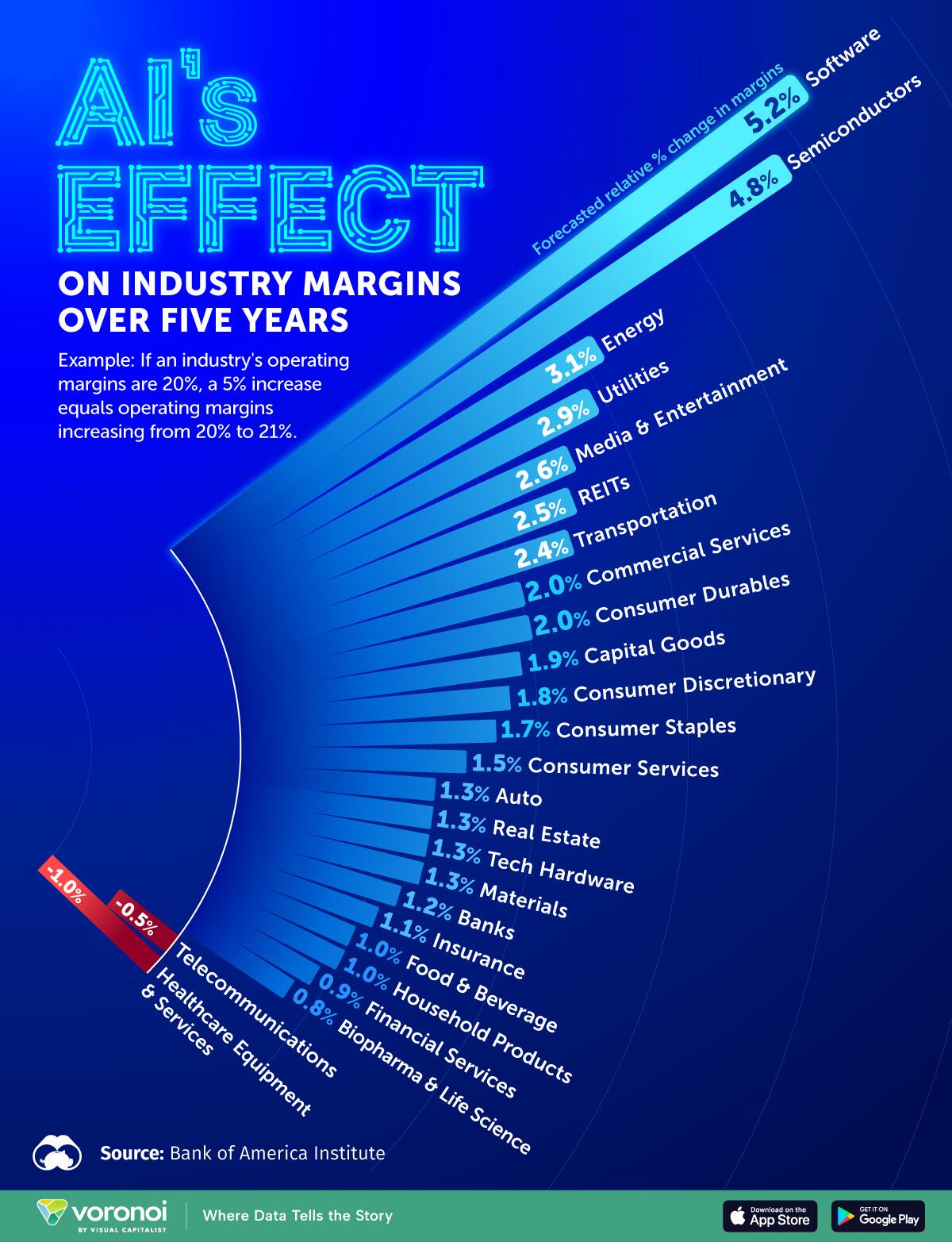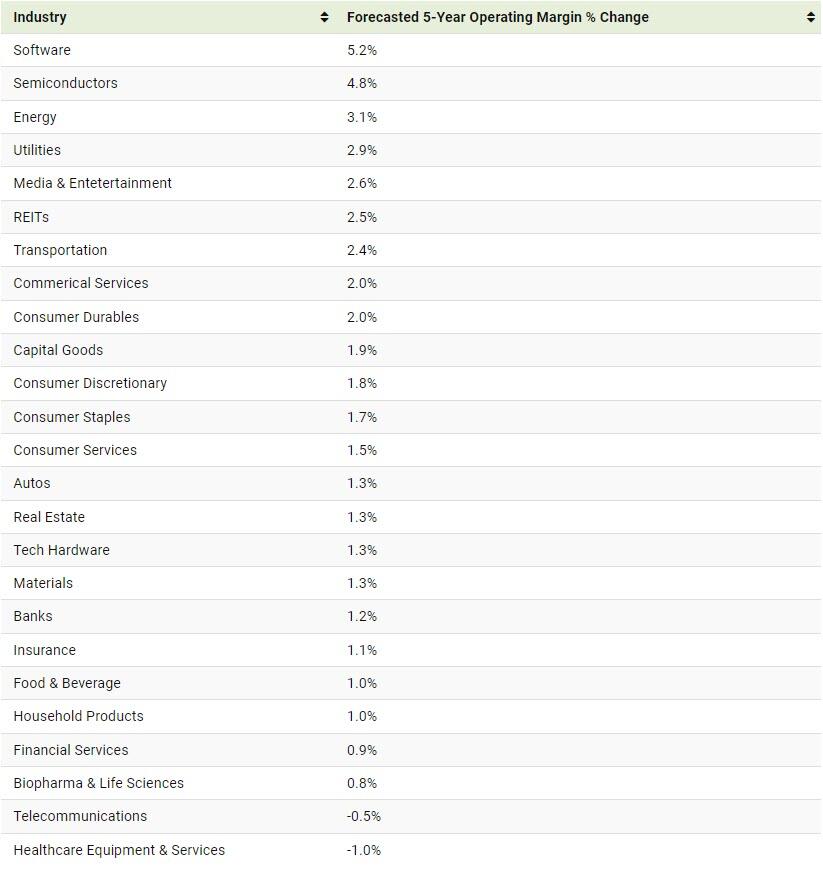Visualizing AI's Effect On Industry Margins Over The Next Five Years
Investors have poured billions into AI-related companies, but adoption is moving slowly across American firms.
According to the Census Bureau, just 5% of American businesses have used AI to produce goods and services over the last two weeks, highlighting that market enthusiasm is not yet matching the real economy. Despite this slow progress, AI has the potential to boost productivity across a wide scope of industries, from energy to transportation.
This graphic, via Visual Capitalist's Dorothy Neufeld, shows AI’s effect on industry margins over the next five years, based on analysis from the Bank of America Institute.
How Will AI Impact the Operating Margin of Industries?
To examine AI’s impact on operating margins, analysts looked at roughly 3,400 companies with a combined market cap of about $90 trillion.
As the below table shows, AI could fuel margin expansion in 23 out of 25 industries, with the greatest impact on software and semiconductor companies in the next five years. Driven by rising demand, AI-driven revenues across semiconductor firms could increase by 34% over this period.
Represents the relative change over five years, where 5% indicates an operating margin increase from 20% to 21%.
Meanwhile, the energy and utilities industries could see margin expansion from implementing AI across a variety of use cases, including exploration, pipeline monitoring, and environmental monitoring.
Today, major players like Shell, GE Vernova, and Schneider Electric are launching AI pilot programs to enhance operations throughout the energy value chain.
In the automotive industry, margins are expected to grow as manufacturers adopt AI-driven predictive maintenance systems, which streamline decision-making and detect potential issues early. By one estimate, AI systems could reduce inspection costs by up to 25% and lower maintenance costs by 10% annually.
Overall, AI-enabled cost savings could reach up to $55 billion annually across S&P 500 companies, reflecting the technology’s broad potential to reshape industries through rapid innovation.
To learn more about this topic from a startup perspective, check out this graphic on the number of AI startups by country in 2024.
NEVER MISS THE NEWS THAT MATTERS MOST
ZEROHEDGE DIRECTLY TO YOUR INBOX
Receive a daily recap featuring a curated list of must-read stories.




